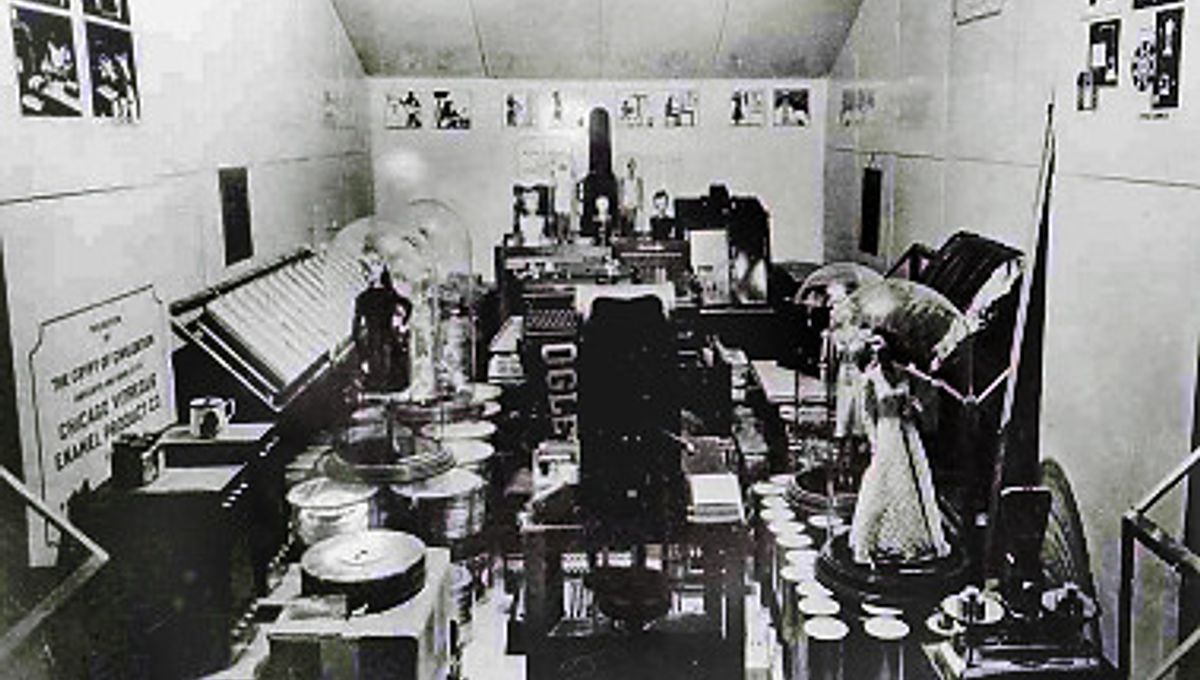
The Crypt of Civilization was sealed 83 years ago. It won’t be opened again until the year 8113 CE.
While studying Ancient Egypt, Dr Thornwell Jacobs was struck by how little accurate information about ancient civilizations had survived. He realized that virtually all our knowledge of life in Ancient Egypt came from just a few sources: the pyramids and a few inscribed tablets found in ancient Assyria.
The idea struck him that it would be helpful – in fact, our “archaeological duty” – to leave behind records of how we lived for future civilizations to study. He had conceived of the first modern-day time capsule, a term he would then invent.
In Phoebe Hearst Hall at Oglethorpe University in Georgia – of which he was president – Jacobs set about creating that time capsule. It was a large room that would be filled with artifacts from 1930s life and knowledge of the last 6,000 years, buried in a defunct swimming pool.
The vault was designed to act as a sort of pharaoh’s tomb, and contained recordings of clarinetist Artie Shaw who was popular in the 1930s, movies showing photographed events from 1898 onwards, and 100 books on microfilm. Everyday artifacts included a little model of Donald Duck. However, no gold, jewelry, or other items of value were included.
A “book of records” listing and describing all the items and their use was also left for future humans, or a new breed of hyper-intelligent dogs – whoever is in charge at the time.
It’s worth noting that Jacobs’ choice of objects for inclusion is very much a reflection of the time and of his prejudiced beliefs, and therefore not necessarily a true snapshot of 1930s America.
Paul Hudson, co-founder of Oglethorpe University’s International Time Capsule Society, described the crypt as “pulsating with life. It’s a living, breathing thing. It’s older than I am and it’s bigger than all of us. Can you imagine a cultural anthropologist in the year 8113 opening the crypt? It would be like a treasure trove. Even things like dental floss would be fascinating.”
He realized that there would likely be a language barrier between us (dead) and whoever found it (not dead), making the books inside the capsule nothing but useless paperweights. The solution he chose, he named a “language integrator“. The hand-cranked device displayed pictures of objects, as well as the name of that object written in English. A voice on the phonograph would speak the name aloud, at the same time.
The opening date for the time capsule was set at 8113 CE. Jacobs explained that in 1936 – when he conceived of the idea – that 6,177 years had elapsed since the creation of the Egyptian calendar. He wanted whoever (or whatever) opened the vault to see a glimpse of the midpoint between their day and the Ancient Egyptians.
For now, you cannot go inside. But if you can’t wait 6,000 years for a glimpse of the crypt, you can visit the sealed door.
Four years after Jacobs had the idea, as the world engaged in World War II, the vault was sealed, hopefully to be found again millennia from now. The optimistic view of humanity’s longevity was a stark contrast to the note Jacobs left in the crypt.
“The world is engaged in burying our civilization forever, and here in this crypt we leave it to you.”
An earlier version of this article was published in May 2022.
Source Link: The World’s Largest Time Capsule Won’t Be Opened For Another 6,000 Years